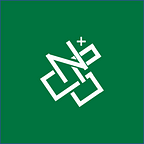Connecting the DOTS
A feature article by Maulyn Murielle Dominguez
The pandemic struck a big impact in our lives, creating significant adjustments from what was previously normal. This is also the case with Edilberto Padios, the barangay captain of Imbang Grande, Passi City.
The BHERT program is in charge of various elements of public health. It focuses on the prevention of major noncommunicable illnesses, vaccination programs, and epidemiological risk factors at the barangay level. Volunteers collaborate with the Department of Health’s (DOH) Rural Health Unit (RHU) to gather data, which is subsequently summarized by the Local Government Unit’s (LGU) health officer. However, this “passing” risked erroneous data because it was based mostly on pen-and-paper recording. This strategy delays the delivery of gathered data to the DOH, making the procedure slower in terms of response.
The tasks of the Barangay Health Emergency Response Team (BHERT) have been transferred to the monitoring of the COVID-19 situation in Passi City, according to an executive order. This prohibited BHERT from carrying out its stated mission of collecting data on the non-communicable illnesses prevalent in Imbang Grande increasing difficulty in the data collection of their supposed purpose.
A group of Grade 12 students from the Philippine Science High School — Western Visayas Campus recognized this problem. They chose healthcare workers as the focus of their Social Science 6 community project. Their objective is to make data collecting and organizing easier for health workers by introducing cloud-based data collecting and GPS (Global Positioning System) tracking.
A lesson plan was developed as part of the project to promote cloud storage and other technological-based tactics in order to improve the efficiency of the present recordkeeping system. They want to achieve a situation where health workers will be able to get a basic understanding of cloud-based document editing and GPS tracking, which will be used in the DOH’s recordkeeping.
The students selected six health workers as participants in their project. A pretest was administered to assess the six participants’ competence of basic computer applications and online surfing. This was considered while putting their lesson plan into action. In an asynchronous consultation, weekly sessions centered on the Google Workshop apps Docs and Sheets for cloud-based editing and Pyphox for GPS tracking were taught. Following that, there was a summative evaluation of the project’s performance via a simulation of digitally encoding sample records and updating the sample data using cloud-based editing, with the results serving as the project’s success indicator.
According to the assessment results, four of the six participants received more than 80% of the competency points for cloud-based data collection and GPS tracking, while two of the six participants received close to 80% of overall competency points. With a mean percentage of 85.12%, they were able to surpass the project’s success indicator’s objective mean percentage of 80% threshold.
This initiative provided healthcare workers with knowledge about cloud-based data collecting and GPS tracking in place of the usual pen-and-paper recording. The training simplified the data collecting process by removing logistical issues with data transmission, allowing public health data to be received on time.
For the students, it was just a community project. It was a requirement meant to be submitted for Social Science. Nonetheless, its impacts are far-reaching. The students’ implementation paved the way for a more efficient and streamlined mechanism for collecting public health data. Furthermore, this could be adopted countrywide across different barangays in the country, speeding up the nation’s public health system. This demonstrates the significance of applying school-based knowledge in the community. A wake-up call to the potential of the transformation that youth may bring to the nation’s future.
